You Will Need:
- Adult help
- Three cups of table salt.
- 1L of water
- One Pencil
- 1 Paperclip
- A piece of string, cut to size.
- One strong plastic or Pyrex jar.
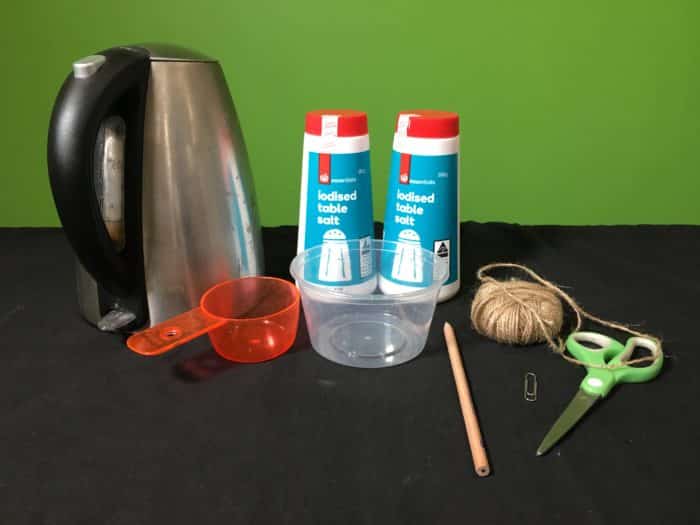
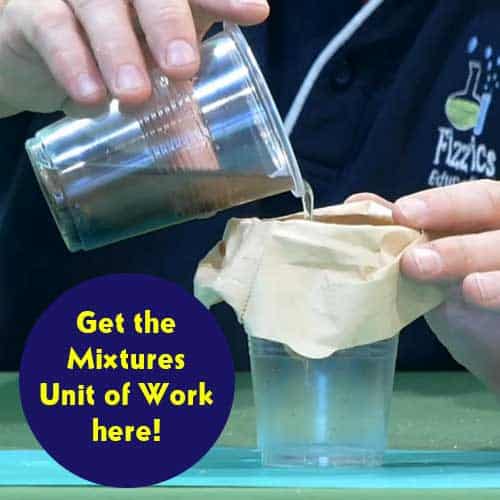
Get the Unit of Work on Mixtures here!
- How can we separate mixtures?
- What are the different techniques?
- From chromatography to magnetism, join us to explore the variety of ways we can separate mixtures!
Includes cross-curricular teaching ideas, student quizzes, a sample marking rubric, scope & sequences & more
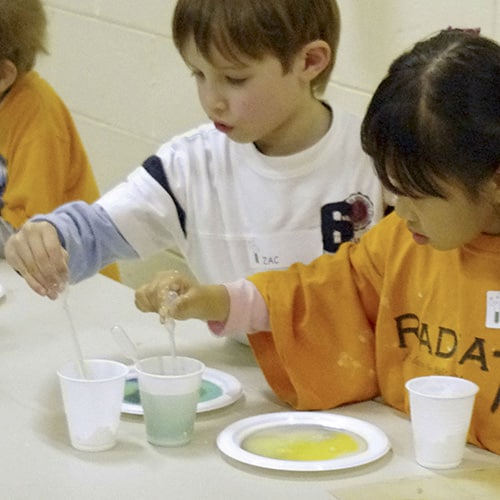
School science visits since 2004!
– Curriculum-linked & award-winning incursions.
– Over 40 primary & high school programs to choose from.
– Designed by experienced educators.
– Over 2 million students reached.
– Face to face incursions & online programs available.
– Early learning centre visits too!
Why Does This Happen:
The crystals could only stay dissolved when the water was hot. Cooling the solution down made it supersaturated, which is unstable. You should have found that the water travelled up the string through a process called capillary action, bringing the salt with it. As the water evaporated on the string, salt crystals were left behind.
A supersaturated solution is a solution that has more material dissolved in it then it would normally allow.
Find out more about capillary action on the external site USGS Water Science.
Variables to test
- Try using epsom salts or sugar instead of table salt. Do you get the same effect?
- Try cold vs. hot water as a comparison
- Does it matter which substrate that you form the crystals on?
From colour changes to slimy science, we’ve got your kitchen chemistry covered!
Get in touch with FizzicsEd to find out how we can work with your class.
Chemistry Show
Years 3 to 6
Maximum 60 students
Science Show (NSW & VIC)
60 minutes
Online Class Available
STEM Full Day Accelerator - Primary
Designed from real classroom experiences, this modular day helps you create consistently effective science learning that directly address the new curriculum with easily accessible and cost-effective materials.
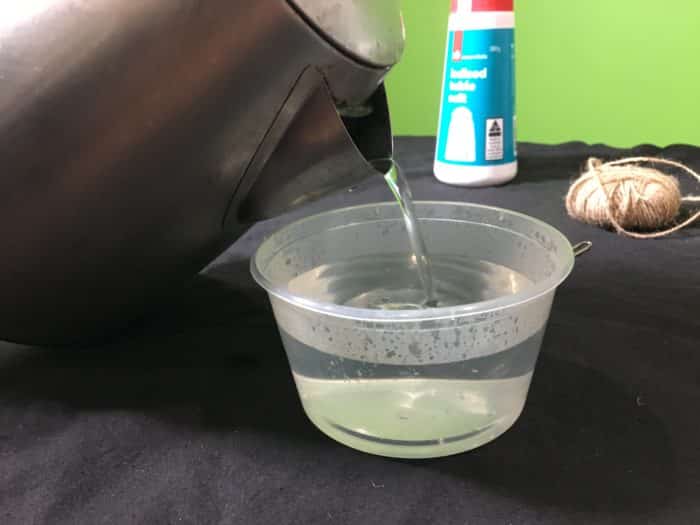
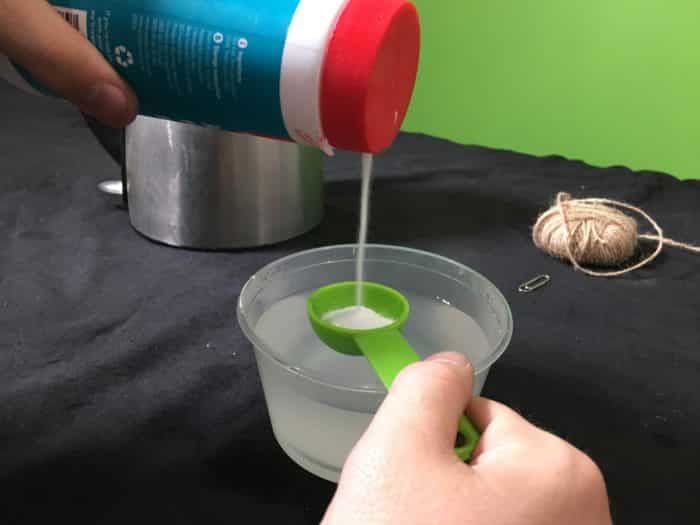
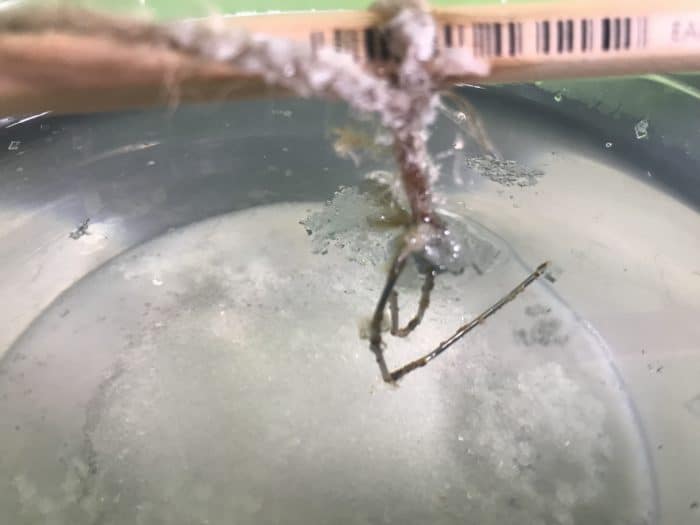
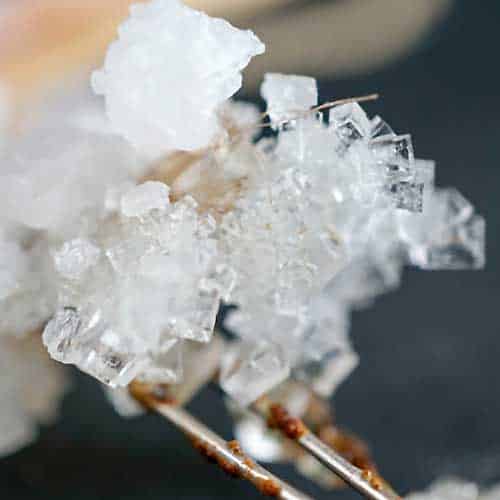


























Will the color change if you add food color?
They should do, give it a try! Have a fun 🙂
Can u use sugar not salt
Sure thing! Just be careful of the hot sugar syrup. Compare these sugar crystals with the salt crystals.